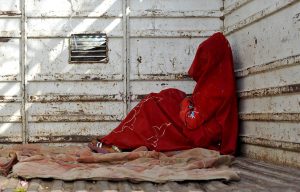On December 16, the Narendra Modi government decided to raise the legal age of marriage of women from 18 to 21 years. The Union Cabinet cleared the proposal and a bill to amend the Prohibition of Child Marriage Act (PCMA), 2006, was introduced in Parliament. The bill is likely to be passed when Parliament reconvenes early next year.
By raising the age of marriage for women to 21 years, the proposed legislation brings parity in the legal age of marriage for men and women. It contains amendments to personal laws of various communities relating to age of marriage to ensure uniformity in this regard.
In 2008, the Law Commission had suggested that 18 should be made the legal age of marriage for both men and women. Even the United Nations General Assembly had recommended this in 1989.
So why has the Modi government acted to raise the legal age of marriage for women?
“I would like to present that women equality in our country needs to be seen in [terms of] age of marriage. Invoking different marriage laws of different faiths, I rise to introduce the amendment bill,” Minister for Women and Child Development Smriti Irani told Parliament.
Irani said that 23 percent of girls below the age of 18 were married despite a law forbidding it. Around 2 million cases of child marriage were stopped in the 2015-2020 period, she said. National Family Health Survey (NFHS) figures reveal that 7 percent of women in the 15-18 years age group were pregnant.
Laws prohibiting marriage below the age of 18 have been in effect in India since the 1900s. Yet child marriage continues to be practiced. In 2005, almost half of all women aged 20-24 were found to have married below the legal minimum age.
Opposition parties have opposed the proposed legislation. While the Congress questioned the motivation behind the government’s decision, Left parties rejected it on the grounds that it impinges upon women’s autonomy. Muslim parties and groups perceive it as an attempt to undermine Muslim personal law.
Importantly, critics are asking whether the government will be able to deliver women’s rights by simply passing a legislation that is bereft of infrastructural and administrative support.
The Modi government has said that it is in favor of holistic and healthy development of young women. By raising the age of marriage for women to 21, it aims to prevent early pregnancy and thereby protect the health of women.
However, the government has been rigorously cutting down funding for public health and pushing the health sector further toward privatization. Instead of increasing expenditure on the health sector, it wants to curb the rights of adult women in the name of reproductive health.
While supporting the proposal to raise the legal age of marriage for women from 18 to 21 years, senior Congress leader P. Chidambaram has suggested that the law be put into force only in 2023. The coming year, he says, should be used by the government to educate people on the benefits of marrying only after a person turns 21.
Describing the proposed legislation as “ridiculous,” All India Majlis-e-Ittehadul Muslimeen (AIMIM) President Asaduddin Owaisi said that both women and men should be allowed to legally marry at 18. When they are treated as adults by the law for all other purposes, why not for marriage? In a series of tweets, Owaisi slammed the government for its “paternalism.”
The proposed legislation on age of marriage is deeply political. After altering the Muslim divorce law, the government is raising the minimum marriage age. In effect, it is systematically chipping away at the personal laws of communities and thus moving toward a Uniform Civil Code (UCC) without actually enacting one.
Enactment of a UCC could enhance equality before the law but it would undermine the individual’s right to freedom of religion guaranteed under Article 25 of the Indian Constitution.
The proposed legislation thus has a communal undercurrent.

































